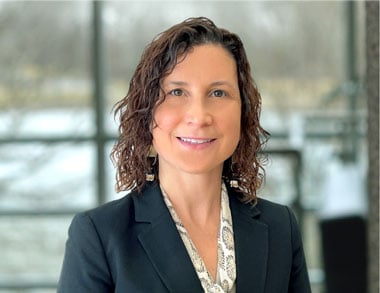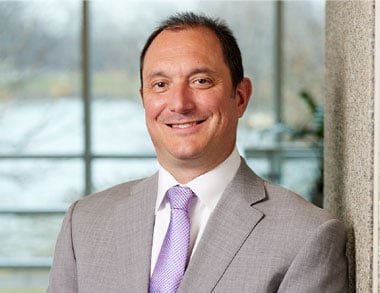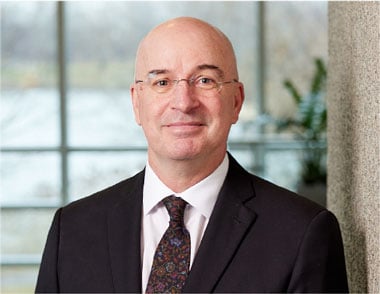 Investment Team Voices Home Page
Investment Team Voices Home Page
Part 2: An Investment Approach that Relentlessly Pursues Leaders
Special Three-Part Series
In part two of a three-part interview with the Calamos Sustainable Equities Team, Tony Tursich, Jim Madden, and Beth Williamson discuss the specific financial and nonfinancial components of their investment approach, which aims to identify leading global companies that deliver superior returns. Read Part 1 of the interview addressing the team's common-sense approach to macro factors.
- What are the most important nonfinancial factors you consider? How do you avoid biases when you rank them?
The most important factors will vary from industry group to industry group and from company to company. We don’t evaluate a software company the same way we evaluate a building products company. Beth has produced more than 70 materiality theses covering all the industry groups—each thesis sets out the material considerations for each group. Armed with these theses, we know what factors deserve attention in determining whether a company is performing well versus its peers. Again, if we are looking at a software company, we’re looking at the efficiency of its data center, programs that run data security and data privacy, and those types of things. However, if we’re looking at building products, we’re looking at where a company is sourcing raw materials, what’s the product range and product life cycle, those types of things.
- In broad brush strokes, what do you look for when selecting stocks?
A company needs to be able to check three boxes: (1) concept, (2) business model, and (3) execution. Many companies check one, some check two, but only the stocks of high-quality companies check all three.
- Tell us more about the team’s fundamental and research-based approach to applying sustainability factors.
Our fundamental research includes industry-level materiality assessments, business model analysis, and company analysis consisting of financial and non-financial metrics, which provide us with a multidimensional understanding of the company. To ensure a holistic view, our research utilizes a myriad of resources, including third-party news sources, NGOs, nonprofits, government agencies, and others. Once we’ve compiled a comprehensive data set, we will analyze a company’s sustainability performance across our proprietary environmental and social impact criteria.
- What other dimensions of your team’s approach are especially important?
Our proprietary screening approach, informed by the One Planet Prosperity framework, enables us to identify companies capable of bridging the demands of human development needs and environmental constraints while striving to create value for shareholders. Our lens for spotting these companies focuses on six defining criteria: product contribution, life cycle innovation, operational efficiency, inclusive finance, ensuring health, and the provision of basic services.
- Your global portfolio includes a diverse array of companies across the global economy. Can you give us some examples of the team’s security selection process in action?
Our security selection helps us achieve the goal of benchmark-beating performance with lower-than-benchmark volatility. We believe investing in “global leaders” supports this goal. We define global leaders as companies compounding economic profits over time and having better future growth potential than their industry peers. Global leaders are also managing their material nonfinancial risks and opportunities well to improve the chances that strong operating fundamentals and market leadership will continue into the foreseeable future. We believe the probability of long-term outperformance increases by holding companies with quality financial fundamentals and quality nonfinancial criteria, such as sustainability characteristics. Here are three companies that exemplify the attributes of “global leaders.”
- Taiwan Semiconductor (TSMC) is the dominant semiconductor foundry with the technological leadership and execution capabilities to capture the industry’s long-term structural growth. TSMC manages resource use better than most. The company has cut toxic chemicals, such as lead from the manufacturing process and manages its water use effectively to the extent that more than 90% of the water used is recycled and repurposed.
- Darling Ingredients (DAR) is a vertically integrated rendering company that controls more than 50% of the used cooking oil supply in the Americas and is the world’s second-largest producer of renewable diesel. DAR is an early mover in the circular economy and has found new and profitable opportunities for value-added products, such as collagen peptides and sustainable aviation fuel.
- Novo Nordisk (NVO) has the world’s strongest portfolio and pipeline of diabetes medicines, including a 45% global market share of advanced synthetic insulin, known as GLP-1, which is emerging as an effective treatment for obesity. Novo Nordisk has been a serial shareholder-value compounder that has reinvested excess returns into R&D to maintain its competitive advantage.
- You mentioned using One Planet Prosperity as part of your proprietary process. Could you share an example of a company that meets the criteria of the One Planet Prosperity Framework?
One Planet Prosperity has two dimensions: improving human lives and addressing ecological overshoot. A great example of a company that is doing both is Merck. In terms of the first dimension—improving human lives—Merck has robust access-to-medicine programs and has adapted its prices based on local market conditions, such as unmet medical and treatment needs, health system capacity, infrastructure, and education. In terms of addressing ecological overshoot, the company invests heavily in R&D initiatives and has expended significant capital to reduce the environmental impact of its products from cradle to grave–while also increasing operational efficiencies.
About the Portfolio Managers
Jim Madden, CFA; Tony Tursich, CFA; and Beth Williamson manage the Calamos sustainable equities suite, including Calamos Antetokounmpo Global Sustainable Equities ETF (SROI) and Calamos Antetokounmpo Sustainable Equities Fund (SROIX), as well as separately managed portfolios. Our team has been at the forefront of sustainable investing since 1997 and launched one of the first fossil-fuel-free funds in the United States. Prior to Calamos Investments, Jim, Tony, and Beth were portfolio managers for the Trillium ESG Global Equity Fund Retail (PORTX).

Beth Williamson
VP, Head of Sustainable Equity Research and Associate Portfolio Manager
19 years of experience
Perspectives on Innovation
- Why “Net Zero” Wins over “Carbon Neutral”
- Sustainable Building Trends Drive Investment Opportunity
- Biodiversity is Abuzz
- Stock Exchanges, A Catalyst for Improved Transparency
- Sustainable Commodities
- The China Conundrum
- We are Bullish on Energy
The opinions referenced are as of the date of publication and are subject to change due to changes in the market or economic conditions and may not necessarily come to pass. Information contained herein is for informational purposes only and should not be considered investment advice. References to specific securities, asset classes and financial markets are for illustrative purposes only and are not intended to be, and should not be interpreted as, recommendations.
This material is distributed for informational purposes only. The information contained herein is based on internal research derived from various sources and does not purport to be statements of all material facts relating to the information mentioned and, while not guaranteed as to the accuracy or completeness, has been obtained from sources we believe to be reliable.
822163 0923
Cookies
This website uses cookies. By continuing to use this website, you consent to the use of cookies. Learn more about our cookie usage.



